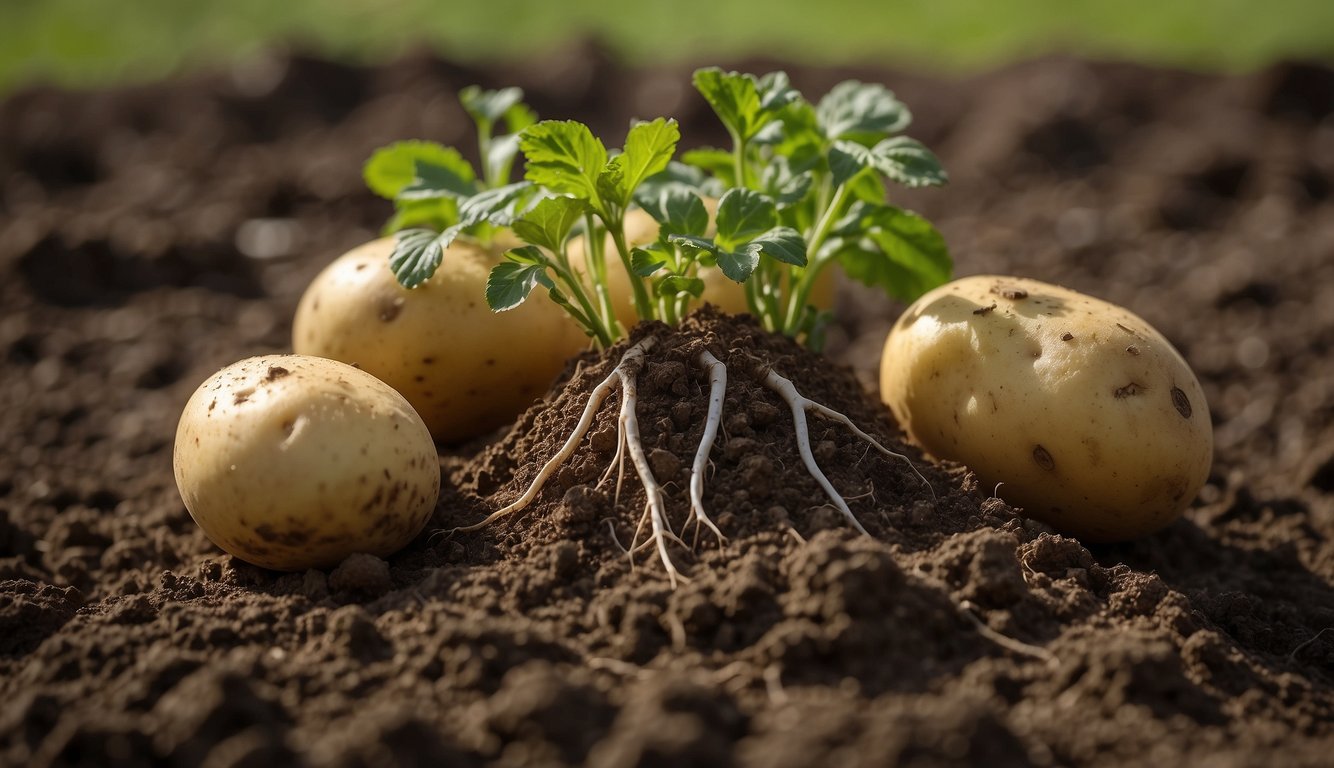TheHerbProf.com is a treasure trove of knowledge for those interested in natural healing and herbal remedies. The website is run by Paul Johnston MD. A naturopathic who has not only received extensive education in the field but also has personal experience in self-healing.
After conducting research on the topic, I can confidently say that bone meal is good for potatoes. As an organic fertilizer, bone meal is an excellent source of essential nutrients that can help boost potato growth. It contains high levels of phosphorus, which is essential for root development, and calcium, which can help prevent diseases that can harm potato crops.
When using bone meal as a fertilizer for potatoes, it is important to follow the proper steps and tips for making it and adding it to the soil. This includes ensuring that the bone meal is well-aged and properly dried before use, as well as adding it to the soil in the correct amounts. By doing so, you can help ensure that your potato plants receive the necessary nutrients for healthy growth and development.
Overall, bone meal is a great choice for those looking for an organic fertilizer to use on their potato crops. Its slow-release feature provides a steady supply of essential nutrients over time, and its calcium content can help prevent diseases that can harm potato crops. By using bone meal as a fertilizer, you can help ensure that your potato plants grow strong and healthy, resulting in a bountiful harvest.
Benefits of Bone Meal for Potato Growth – Is Bone Meal Good for Potatoes?
As someone who has been growing potatoes for years, I can confidently say that bone meal is an excellent natural fertilizer that can benefit potato growth in many ways. Here are some of the benefits of using bone meal for potato growth:
High Phosphorus Content – Is Bone Meal Good for Potatoes?
Bone meal is a great source of phosphorus, an essential nutrient for healthy potato growth. Phosphorus helps in the development of strong roots, which is crucial for nutrient uptake and water absorption. Bone meal contains up to 20% phosphorus, making it an excellent source of this nutrient.
Improved Root Development
One of the key benefits of using bone meal for potato growth is improved root development. Strong roots are essential for healthy plant growth, and bone meal can help in this regard. The phosphorus in bone meal helps potato plants to develop strong and healthy roots, which can in turn help in nutrient uptake and water absorption.
Enhanced Yield and Quality
Using bone meal as a fertilizer can help enhance the yield and quality of your potato crop. According to Houseandhomeonline.com, bone meal can help promote optimal crop yield by providing essential nutrients to the plants. The high phosphorus content in bone meal can help in the development of healthy tubers, resulting in a bountiful harvest.
Bone meal is an excellent natural fertilizer that can benefit potato growth in many ways. Its high phosphorus content, ability to improve root development, and potential to enhance yield and quality make it a great choice for potato growers.
Using Bone Meal When Planting Potatoes – Is Bone Meal Good for Potatoes?
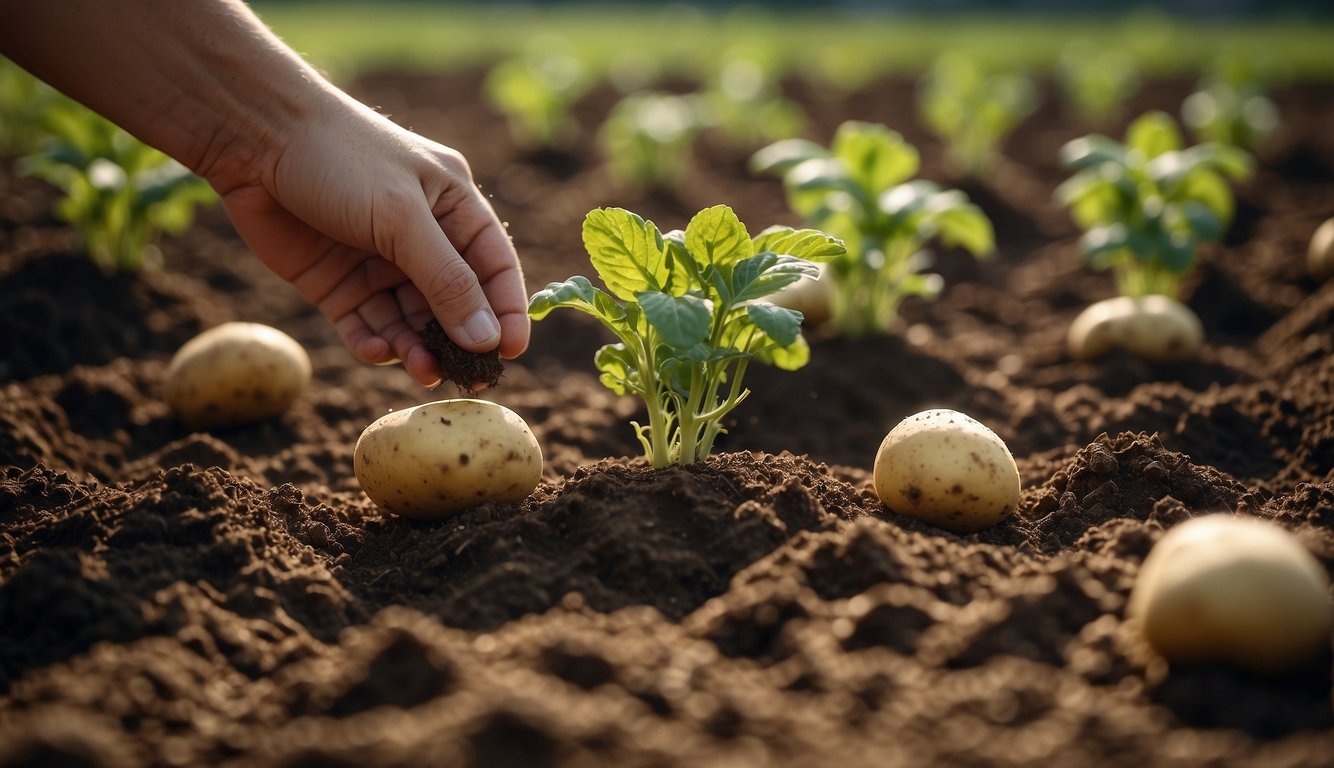
As a seasoned potato farmer, I have found that using bone meal as a fertilizer is an effective way to promote healthy growth and increase the yield of my potato crop. Here are some tips on how to properly use bone meal when planting potatoes.
Application Techniques
When planting potatoes, I recommend applying bone meal directly to the soil. One way to do this is to sprinkle a small amount of bone meal on the surface of the soil around the seed potatoes before covering them. Alternatively, you can mix bone meal into the soil before planting. Be sure to mix it thoroughly to ensure even distribution.
Optimal Timing for Bone Meal
The optimal time to apply bone meal to your potato plants is during planting. This allows the bone meal to release its nutrients slowly throughout the growing season, providing your potatoes with a steady supply of nutrients.
Determining the Correct Amount
The amount of bone meal you should use depends on the size of your potato crop and the quality of your soil. As a general rule, you should use one pound of bone meal for every 50 feet of row. However, if your soil is particularly nutrient-poor, you may need to use more. Be sure to read the instructions on the package carefully and follow them closely to avoid over-fertilizing.
Using bone meal as a fertilizer when planting potatoes can help promote healthy growth and increase your yield. By following the tips outlined above, you can ensure that your potato crop receives the optimal amount of nutrients for a bountiful harvest.
Soil Preparation and Amendments – Is Bone Meal Good for Potatoes?
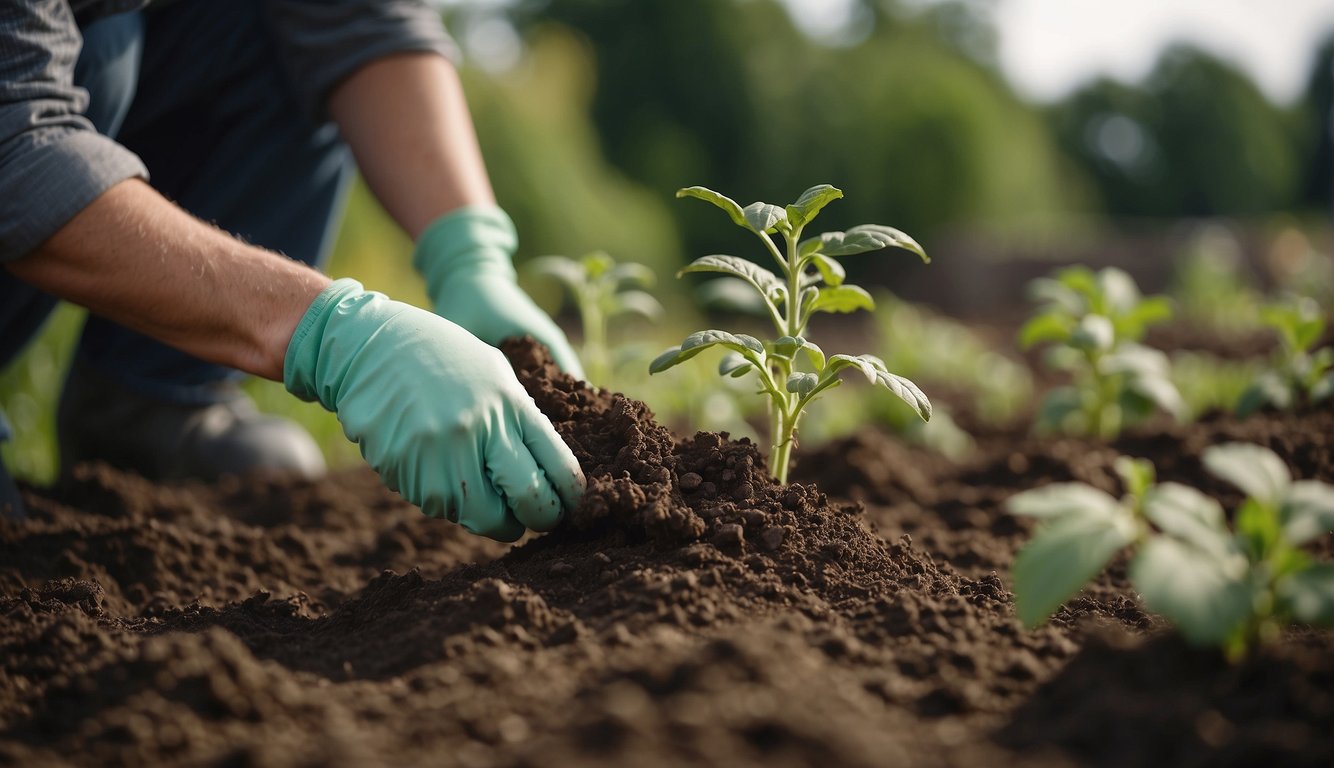
Potatoes thrive in well-drained soil that is rich in nutrients. Before planting, it is important to prepare the soil by testing its pH level and improving its structure. In this section, I will discuss the different ways to prepare the soil for potatoes, including testing soil pH, improving soil structure, and additional amendments.
Testing Soil pH
Soil pH is an important factor to consider when preparing the soil for potatoes. Ideally, the soil pH should be between 5.5 and 6.5, which is slightly acidic. Testing the soil pH can be done using a soil test kit or by sending a sample to a laboratory. Once you know the pH level of your soil, you can adjust it as needed to ensure optimal potato growth.
Improving Soil Structure
Potatoes grow best in well-drained soil that is loose and crumbly. If the soil is compacted or heavy, it can be difficult for the potato roots to penetrate the soil and absorb nutrients. One way to improve soil structure is by adding compost or well-rotted manure to the soil. These organic materials can help break up heavy soil and improve drainage.
Additional Amendments – Is Bone Meal Good for Potatoes?
In addition to improving the soil structure, adding soil amendments can provide the necessary nutrients for potato growth. One popular soil amendment is bone meal, which is a slow-release organic fertilizer rich in phosphorus and calcium. According to vegetablegardenerx.com, bone meal is a nutrient-dense soil amendment that can help promote strong root growth and prevent diseases that can harm potato crops.
Other organic fertilizers that can be used as soil amendments include fish emulsion, blood meal, and kelp meal. These fertilizers can provide a balanced mix of nutrients that can help improve soil fertility and promote healthy potato growth.
In summary, preparing the soil for potatoes involves testing the soil pH, improving soil structure, and adding soil amendments. By following these steps, you can ensure that your potatoes have the necessary nutrients and growing conditions to produce a bountiful harvest.
Bone Meal Alternatives and Comparisons

Comparing Nutrient Profiles
While bone meal is a popular fertilizer for potatoes due to its high phosphorus content, there are other fertilizers that can provide similar benefits. For example, compost is a nutrient-rich soil amendment that can improve soil structure and fertility. Compost also contains a balanced mix of nutrients, including nitrogen, phosphorus, and potassium, which are essential for plant growth.
Another option is a 10-10-10 fertilizer, which contains equal amounts of nitrogen, phosphorus, and potassium. This type of fertilizer can provide a balanced nutrient profile for potatoes, although it may not be as effective at promoting root growth as bone meal.
Cottonseed meal is another organic fertilizer that can be used as an alternative to bone meal. It contains a high amount of nitrogen, which can promote leafy growth, as well as smaller amounts of phosphorus and potassium.
Organic vs Synthetic Fertilizers – Is Bone Meal Good for Potatoes?
When choosing a fertilizer for potatoes, it’s important to consider whether you want to use organic or synthetic fertilizers. Organic fertilizers, such as bone meal, compost, and cottonseed meal, are made from natural materials and are generally considered safe for the environment. They also tend to be slower-acting than synthetic fertilizers, which can be an advantage for potatoes since they require a steady supply of nutrients throughout the growing season.
Synthetic fertilizers, such as water-soluble fertilizers, are made from chemicals and are designed to provide a quick boost of nutrients to plants. While they can be effective at promoting growth, they can also be harmful to the environment if used improperly. In addition, they can be expensive and may not provide the same long-term benefits as organic fertilizers.
Environmental Considerations
When choosing a fertilizer for potatoes, it’s important to consider the environmental impact of your choice. Organic fertilizers, such as bone meal and compost, are generally considered safe for the environment since they are made from natural materials and do not contain harmful chemicals. In addition, they can help improve soil health and reduce the need for synthetic fertilizers in the future.
Synthetic fertilizers, on the other hand, can be harmful to the environment if used improperly. They can contribute to water pollution and can also harm beneficial soil organisms. In addition, they can be expensive and may not provide the same long-term benefits as organic fertilizers.
Overall, when choosing a fertilizer for potatoes, it’s important to consider the nutrient profile, organic vs synthetic options, and environmental impact of your choice. While bone meal is a popular choice for its high phosphorus content, there are other options available that can provide similar benefits.
Caring for Potato Plants – Is Bone Meal Good for Potatoes?
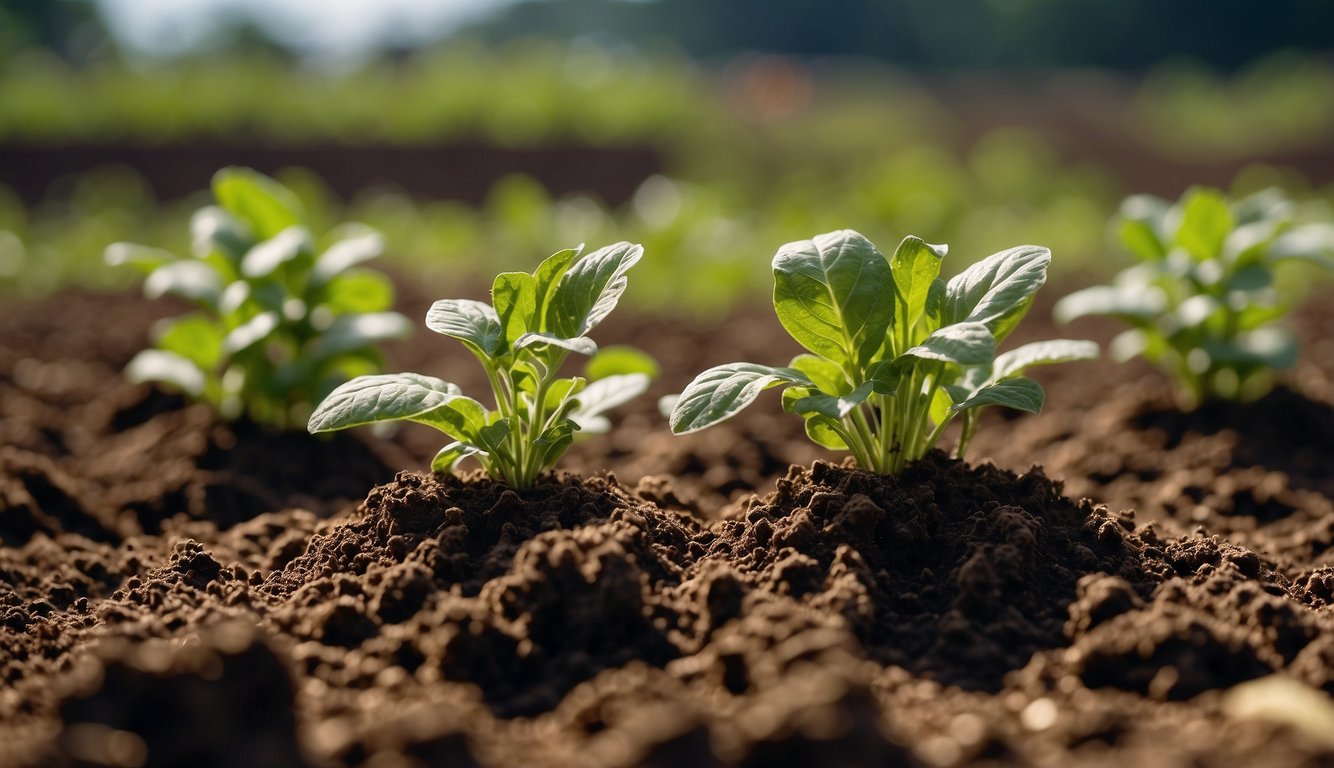
As a gardener, I know that growing potatoes can be a rewarding experience. However, it requires proper care and attention to ensure that the plants grow healthy and produce a bountiful harvest. In this section, I will discuss some of the essential aspects of caring for potato plants.
Watering and Irrigation
Water is an essential element for the growth of potato plants. The plants require a consistent supply of water to ensure that they grow healthy and produce a good yield. As a general rule, potato plants require about an inch of water per week. However, this may vary depending on the climate, soil type, and other factors.
One way to ensure that the plants receive adequate water is to use a drip irrigation system. This system delivers water directly to the roots of the plants, reducing water loss due to evaporation. It also ensures that the water is distributed evenly, preventing over-watering or under-watering.
Mulching and Weed Control
Mulching is an effective way to control weeds and conserve moisture in the soil. It involves covering the soil around the plants with a layer of organic material, such as straw or leaves. This layer helps to suppress weed growth and retain moisture in the soil.
When mulching potato plants, it is important to avoid covering the stems or leaves of the plants. This can lead to rotting and other issues. Instead, apply the mulch around the base of the plants, leaving a small gap around the stem.
Pest and Disease Management
Potato plants are susceptible to a range of pests and diseases, including aphids, Colorado potato beetle, and flea beetles. These pests can cause significant damage to the plants, reducing yield and quality.
To manage pests and diseases, it is important to monitor the plants regularly and take action at the first sign of an infestation. This may involve using organic or chemical pesticides, depending on the severity of the problem.
Caring for potato plants involves providing them with adequate water, controlling weeds through mulching, and managing pests and diseases. By following these steps, you can ensure that your potato plants grow healthy and produce a bountiful harvest.
Harvesting and Storing Potatoes – Is Bone Meal Good for Potatoes?
As a gardener, harvesting potatoes can be an exciting and rewarding experience. It is important to know when to harvest your potatoes, how to do it properly, and how to store them for future use. In this section, I will provide you with some tips on how to harvest and store potatoes.

Signs of Potato Maturity – Is Bone Meal Good for Potatoes?
Before harvesting potatoes, you need to make sure they have reached maturity. Mature potatoes are ready for harvest when the foliage has died back and the skin on the potato is firm. To check if the potatoes are mature, you can gently dig around the base of the plant and check for the size of the tubers. New potatoes can be harvested when they are small and round, and the skin is still tender.
Techniques for Harvesting
When harvesting potatoes, it is important to be gentle to avoid damaging the potatoes. You can use a garden fork or a spade to dig up the potatoes. Start digging around the base of the plant and work your way outward, being careful not to damage the tubers. Once you have dug up the potatoes, gently brush off any excess soil.
Curing and Storage Tips
After harvesting, it is important to cure the potatoes before storing them. Curing allows the skin of the potato to thicken and heal any wounds, which helps to prolong their storage life. To cure the potatoes, spread them out in a cool, dry, and dark place for about two weeks. After curing, store the potatoes in a cool, dark, and well-ventilated area. Avoid storing them in direct sunlight or areas with high humidity, as this can cause the potatoes to sprout or rot.
Proper harvesting and storage techniques can help to increase your potato yields and provide you with delicious potatoes for months to come.
Potato Varieties and Selection – Is Bone Meal Good for Potatoes?
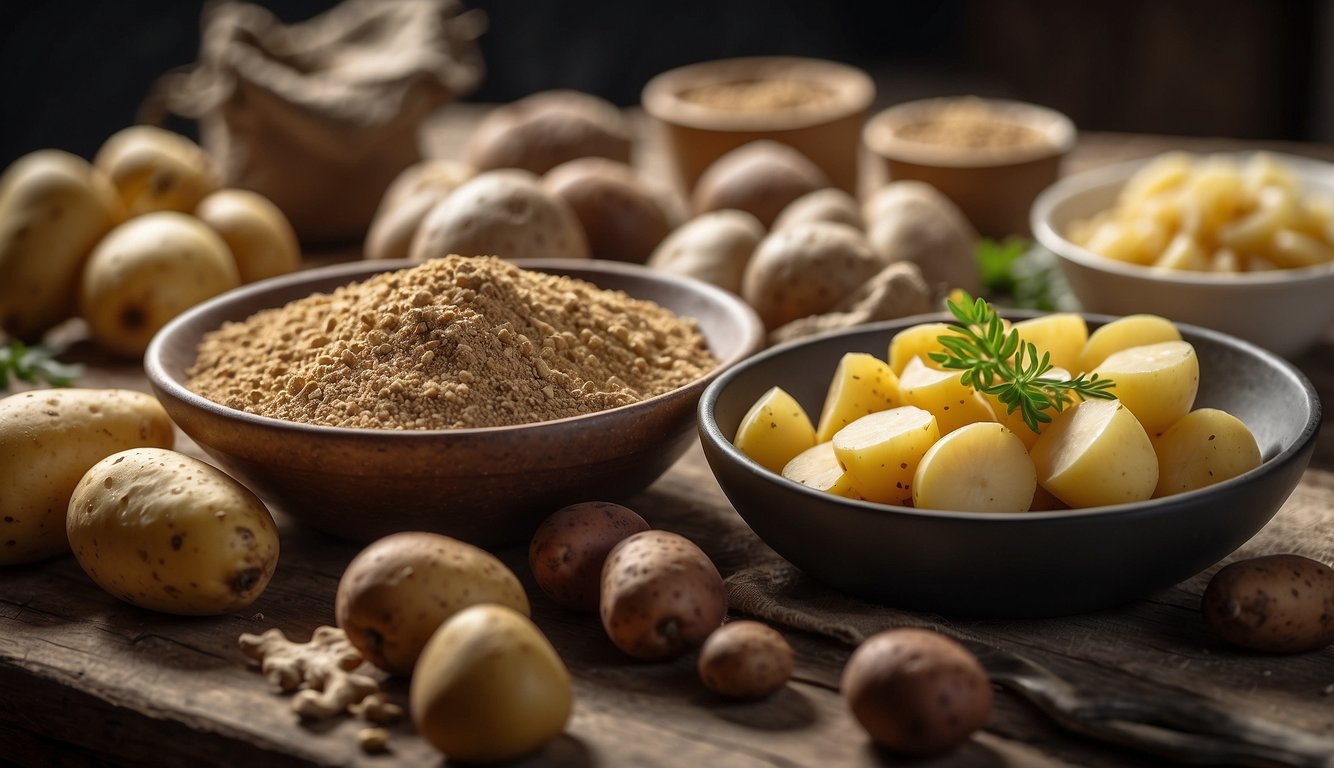
When it comes to growing potatoes, selecting the right variety is crucial. There are many different types of potatoes available, each with its own unique characteristics. In this section, I will discuss the differences between early and late maturing varieties and provide some tips on selecting the best seed potatoes.
Early vs Late Maturing Varieties – Is Bone Meal Good for Potatoes?
Early maturing potato varieties typically take between 70 and 90 days to mature and are ideal for gardeners who want to harvest their potatoes quickly. These varieties are also well-suited for areas with short growing seasons or for gardeners who want to plant a second crop later in the season. Some popular early maturing varieties include Yukon Gold and Banana Fingerling.
Late maturing potato varieties, on the other hand, take between 90 and 120 days to mature. These varieties are best suited for gardeners who want to store their potatoes for long periods of time. Late maturing varieties tend to have thicker skins and a denser flesh, which helps them to keep longer. Some popular late maturing varieties include Russet and Red Norland.
Selecting Seed Potatoes
When selecting seed potatoes, it is important to choose certified seed potatoes. Certified seed potatoes are guaranteed to be disease-free and will produce a higher yield than non-certified seed potatoes. You should also choose seed potatoes that are the same size or slightly larger than a golf ball. Smaller seed potatoes may not produce as many potatoes, and larger seed potatoes may produce potatoes that are too large.
In addition to choosing the right seed potatoes, it is also important to prepare your soil properly. Potatoes prefer loose, well-drained soil that is rich in organic matter. Adding bone meal to your soil can help to promote healthy growth and a bountiful harvest. Bone meal is an organic fertilizer that contains high amounts of phosphorus, making it a great choice for nourishing potato plants. Its slow-release feature provides a steady supply of essential nutrients over time, which can help to prevent diseases that can harm potato crops.
In summary, selecting the right potato variety and seed potatoes is crucial for a successful harvest. Early maturing varieties are ideal for gardeners who want to harvest their potatoes quickly, while late maturing varieties are best suited for gardeners who want to store their potatoes for long periods of time. Choosing certified seed potatoes and preparing your soil properly can also help to ensure a healthy and bountiful harvest.
Garden Design and Potato Planting Layout – Is Bone Meal Good for Potatoes?

When it comes to growing potatoes, proper garden design and planting layout are crucial for optimal growth. Here are some tips that I have found useful for incorporating potatoes into home and backyard gardens.
Row Spacing for Optimal Growth – Is Bone Meal Good for Potatoes?
Potatoes require adequate space to grow and spread out. When planting potatoes, it is important to give them enough room to grow and develop healthy roots. I recommend spacing potato rows about 2-3 feet apart, with each potato plant spaced about 8-12 inches apart within the row.
This spacing allows for proper air circulation and sunlight exposure, which are important for preventing disease and promoting healthy growth. It also makes it easier to harvest the potatoes when they are ready.
Incorporating Potatoes into Backyard Gardens
Potatoes can be a great addition to any backyard garden. They are easy to grow, require little maintenance, and can produce a bountiful harvest. When planning your garden layout, consider incorporating potatoes into your crop rotation.
One way to do this is to plant potatoes in the same area where you grew beans or peas the previous year. These legumes add nitrogen to the soil, which is beneficial for potato growth. Alternatively, you can plant potatoes in a separate bed or container garden.
When planting potatoes in a container, make sure to choose a large container that allows for proper drainage and air circulation. Fill the container with a mixture of soil and compost, and plant the potatoes about 4-6 inches deep. As the potatoes grow, add more soil to the container to cover the stems and promote more tuber growth.
By following these tips for garden design and planting layout, you can ensure that your potatoes grow and thrive in your home or backyard garden.
The Rooted Connection: Is Bone Meal Good for Potatoes and The Herb Prof
Let’s dig into the rooted topic of Is Bone Meal Good for Potatoes and its connection to our herbal paradise, theherbprof.com. Ready for a potato-tastic journey?
Firstly, using bone meal for potatoes is a practice of nourishment and growth. It’s about providing essential nutrients for our potato pals. Sounds familiar? That’s because theherbprof.com helps you nourish your herbal knowledge!
Secondly, both potato care and theherbprof.com are about sustainable growth. Just like bone meal provides a natural source of nutrients for potatoes, theherbprof.com promotes sustainable practices in herb cultivation.
Lastly, they both aim to enrich our lives. Potatoes add a hearty touch to our meals, while theherbprof.com adds a hearty touch to our minds with herbal wisdom.
So, there you have it! Is Bone Meal Good for Potatoes and theherbprof.com are a rooted pair indeed. They both symbolize nourishment, sustainable growth, and enrichment. Now, isn’t that a potato-tastic piece of information to share at your next garden party? Keep growing, folks!
References – Is Bone Meal Good for Potatoes?
Little Herb Encyclopedia, by Jack Ritchason; N.D., Woodland Publishing Incorporated, 1995
The Ultimate Healing System, Course Manual, Copyright 1985, Don Lepore
Planetary Herbology, Michael Tierra, C.A., N.D., Lotus Press, 1988
Handbook of Medicinal Herbs, by James A. Duke, Pub. CRP Second Edition 2007
The Complete Medicinal Herbal, by Penelope Ody, Published by Dorling Kindersley
Check the Following Articles!
Tomato Leaves Turning White: Causes and Solutions
Growing Peppers in a Greenhouse: Tips and Techniques
Growing Cucumbers in Grow Bags
Frequently Asked Questions – Is Bone Meal Good for Potatoes?
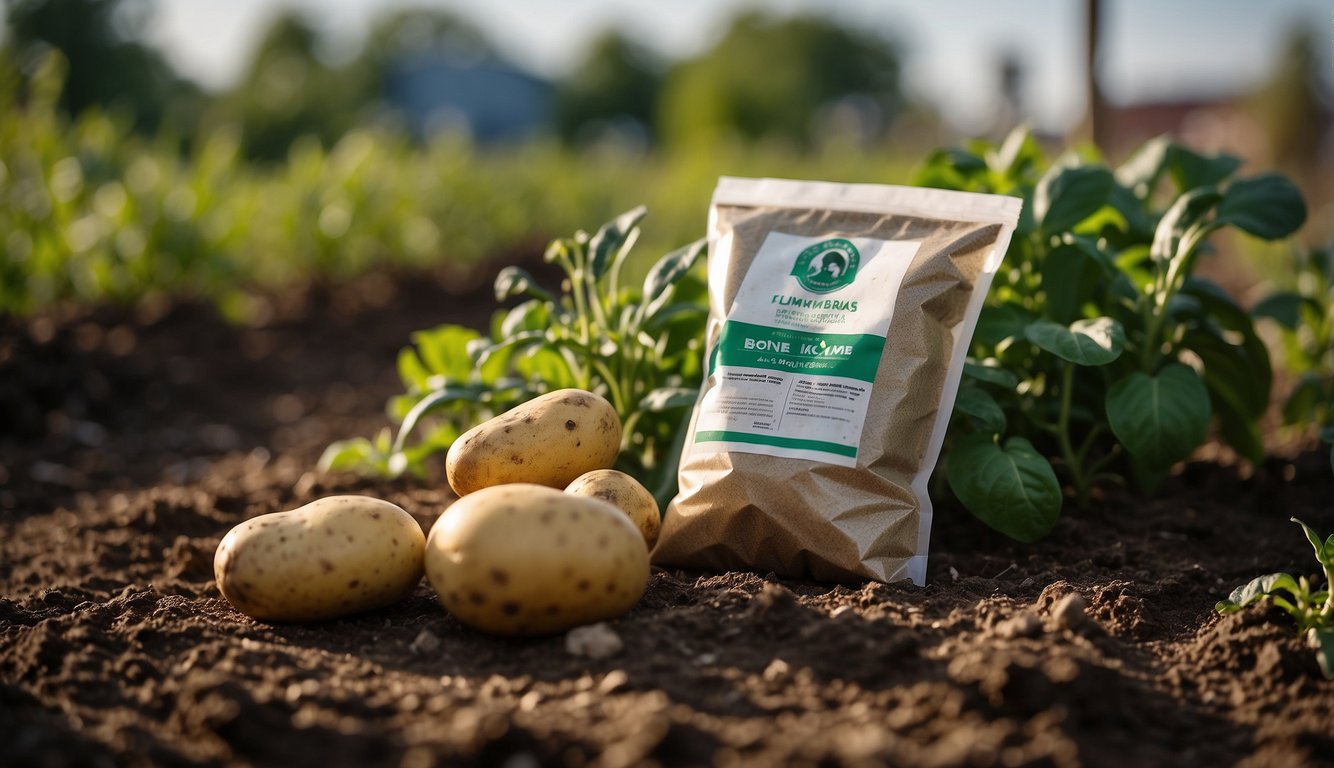
How should bone meal be applied when fertilizing potatoes?
Bone meal should be applied to the soil before planting the potato seeds or sprouts. It is recommended to mix bone meal with the soil at a ratio of 1 part bone meal to 10 parts soil. Alternatively, bone meal can be applied as a top dressing around the base of the potato plant after planting. It is important to avoid direct contact between the bone meal and the potato tubers, as this can lead to rot.
What are the benefits of using bone meal for potato plants?
Bone meal is an excellent source of phosphorus, which is essential for healthy potato plants. Phosphorus helps potatoes to develop strong roots and produce abundant flowers and fruits. In addition to phosphorus, bone meal also contains other essential nutrients such as calcium and magnesium, which help to promote healthy growth and prevent nutrient deficiencies.
Can bone meal be used for potatoes grown in containers?
Yes, bone meal can be used for potatoes grown in containers. However, it is important to use a well-draining potting mix and to avoid over-fertilizing, as container-grown plants are more susceptible to nutrient burn. It is recommended to mix bone meal with the potting mix at a ratio of 1 part bone meal to 10 parts potting mix.
Are there any specific considerations for using bone meal with potatoes in certain climates, such as Florida?
In hot and humid climates such as Florida, it is important to avoid over-fertilizing with bone meal, as this can lead to nutrient burn and other problems. It is recommended to use bone meal in moderation and to water the plants regularly to prevent nutrient buildup in the soil. Additionally, it is important to choose potato varieties that are well-suited to the local climate and to provide adequate shade and protection from the sun.
What is the recommended amount of bone meal to use per potato plant?
The recommended amount of bone meal to use per potato plant varies depending on the size of the plant and the quality of the soil. In general, it is recommended to use 1-2 cups of bone meal per 10 square feet of soil. However, it is important to follow the manufacturer’s instructions and to avoid over-fertilizing, as this can lead to nutrient burn and other problems.
What are the potential drawbacks of using bone meal as a fertilizer for potatoes?
One potential drawback of using bone meal as a fertilizer for potatoes is that it can attract pests such as rodents and dogs, who are attracted to the smell of the bone meal. Additionally, bone meal can be slow to release nutrients, which can lead to nutrient deficiencies if not used in conjunction with other fertilizers. Finally, bone meal can be expensive compared to other fertilizers, which may be a consideration for some gardeners.
